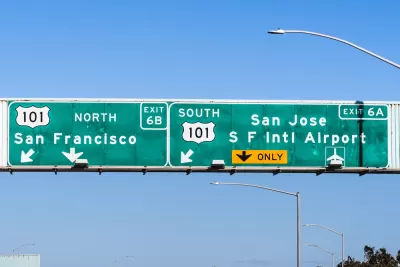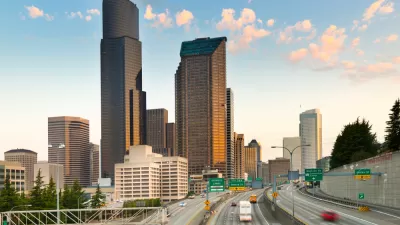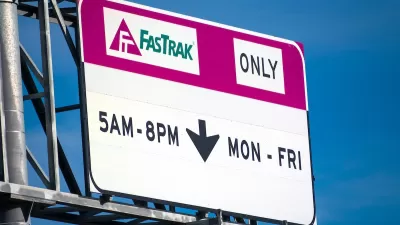Induced demand strikes again.

A two-phase project to add capacity to Highway 101 where it crosses the San Francisco Peninsula spent $600 million and so far has accomplished no progress on congestion, according to a recent article by Roger Ruddick for Streetsblog San Francisco.
The first phase of the project opened in February 2022, with the second phase opening in March 2023. According to locals, however, congestion on the stretch of highway between San Bruno and Palo Alto is unchanged, however.
Rudick quotes Mike Swire, a Peninsula advocate and member of the Citizen’s Advisory Committee of the San Mateo County Transit Authority, who describes the congestion on Highway 101 as only getting worse. "At what point do we stop doing something we know isn't working?" asks Swire in the article.
The project spent $600 million to add Express Lanes along the 15-mile stretch, one of two direct freeway connections between San Francisco and the Silicon Valley. The article characterizes the widening of little to no avail as a repetition of a theme in California.
“This is a continually repeating pattern with freeway widening projects: think of the Oakland Alameda Access Project, a project to massively increase the size of a ramp complex in South San Francisco, or the widening of Los Angeles's 405 freeway, or many other freeway widening and road capacity projects,” writes Rudick of the ability of induced demand to overwhelm all automobile infrastructure capacity in the Bay Area.
It must be noted that no data to back up the figures about congestion on Highway 101 are included.
FULL STORY: Not a Surprise: 101 Freeway Widening Shows Negative Results

Planetizen Federal Action Tracker
A weekly monitor of how Trump’s orders and actions are impacting planners and planning in America.

Congressman Proposes Bill to Rename DC Metro “Trump Train”
The Make Autorail Great Again Act would withhold federal funding to the system until the Washington Metropolitan Area Transit Authority (WMATA), rebrands as the Washington Metropolitan Authority for Greater Access (WMAGA).

The Simple Legislative Tool Transforming Vacant Downtowns
In California, Michigan and Georgia, an easy win is bringing dollars — and delight — back to city centers.

The States Losing Rural Delivery Rooms at an Alarming Pace
In some states, as few as 9% of rural hospitals still deliver babies. As a result, rising pre-term births, no adequate pre-term care and harrowing close calls are a growing reality.

The Small South Asian Republic Going all in on EVs
Thanks to one simple policy change less than five years ago, 65% of new cars in this Himalayan country are now electric.

DC Backpedals on Bike Lane Protection, Swaps Barriers for Paint
Citing aesthetic concerns, the city is removing the concrete barriers and flexposts that once separated Arizona Avenue cyclists from motor vehicles.
Urban Design for Planners 1: Software Tools
This six-course series explores essential urban design concepts using open source software and equips planners with the tools they need to participate fully in the urban design process.
Planning for Universal Design
Learn the tools for implementing Universal Design in planning regulations.
Smith Gee Studio
City of Charlotte
City of Camden Redevelopment Agency
City of Astoria
Transportation Research & Education Center (TREC) at Portland State University
US High Speed Rail Association
City of Camden Redevelopment Agency
Municipality of Princeton (NJ)





























